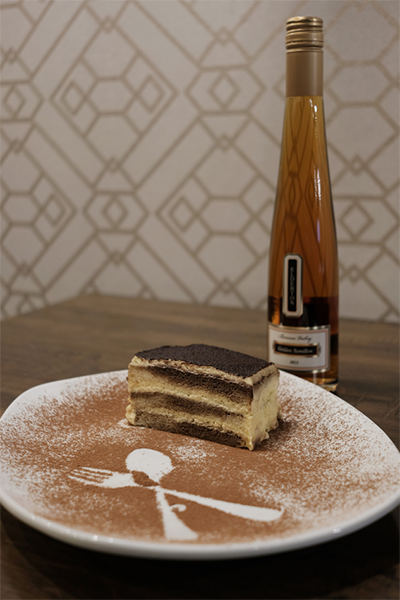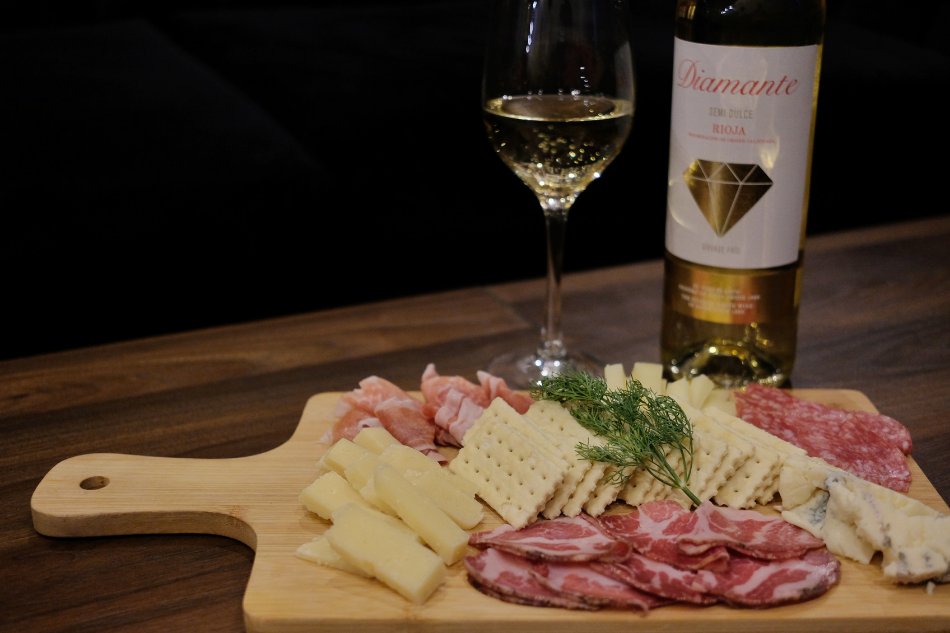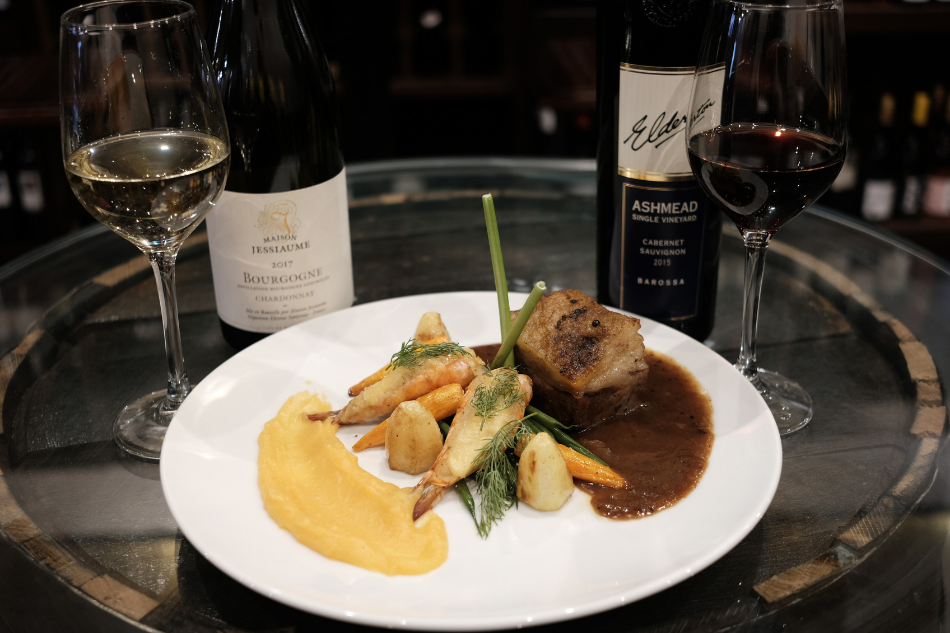What wine should you pair with what dish? Here’s a wine expert’s life-changing advice | ABS-CBN

Welcome, Kapamilya! We use cookies to improve your browsing experience. Continuing to use this site means you agree to our use of cookies. Tell me more!
What wine should you pair with what dish? Here’s a wine expert’s life-changing advice
What wine should you pair with what dish? Here’s a wine expert’s life-changing advice
Gail Sotelo
Published Oct 27, 2019 03:23 PM PHT
Red meat with red wine. White meat with white wine. Red wine with chocolate. These are just some of the food and wine pairing rules many of us have heard of—and continue to apply.
Red meat with red wine. White meat with white wine. Red wine with chocolate. These are just some of the food and wine pairing rules many of us have heard of—and continue to apply.
The thing people forget, however, is this basic principle: Taste is subjective. I always start discussions like these by saying, “Wine is like kare-kare.” A friend likes hers with more peanut sauce, I like mine with more veggies. Logically speaking, neither one is superior, but our preferences make us believe that one is better.
The thing people forget, however, is this basic principle: Taste is subjective. I always start discussions like these by saying, “Wine is like kare-kare.” A friend likes hers with more peanut sauce, I like mine with more veggies. Logically speaking, neither one is superior, but our preferences make us believe that one is better.
Applying this to the topic, how we prefer our wine (and the food that goes with it) is just as subjective, and is largely based on the outcome we want to achieve. For instance, there are people who would find salmon sashimi with soy sauce paired with Merlot inoffensive. There are others (some studies say more “sensitive” tasters) who wouldn’t find it palatable.
Applying this to the topic, how we prefer our wine (and the food that goes with it) is just as subjective, and is largely based on the outcome we want to achieve. For instance, there are people who would find salmon sashimi with soy sauce paired with Merlot inoffensive. There are others (some studies say more “sensitive” tasters) who wouldn’t find it palatable.
Having said that, it’s by veering away from traditional food and wine pairing rules and understanding how food flavors interact with wine flavors that keeps things more objective.
Having said that, it’s by veering away from traditional food and wine pairing rules and understanding how food flavors interact with wine flavors that keeps things more objective.
ADVERTISEMENT
The best way to start is by figuring out the concept of wine enemies and wine friends. Wine friends are food flavors that enhance good aspects of wine and diminish its unfavorable flavors. Wine enemies do the opposite, enhancing negative characteristics of wine and diminishing its good components. Wine friends include salty and acidic food, while wine enemies include sweet and umami-rich food.
The best way to start is by figuring out the concept of wine enemies and wine friends. Wine friends are food flavors that enhance good aspects of wine and diminish its unfavorable flavors. Wine enemies do the opposite, enhancing negative characteristics of wine and diminishing its good components. Wine friends include salty and acidic food, while wine enemies include sweet and umami-rich food.
It also helps to understand the ideal outcomes we want to have. People generally want to experience sweetness, fruit characteristics, and fuller body from their wine. Conversely, people do not like tasting bitterness, acidity (indicated by high levels of salivation), tannin (that cottony sensation on the gums), and chemesthesis (mouth burn).
It also helps to understand the ideal outcomes we want to have. People generally want to experience sweetness, fruit characteristics, and fuller body from their wine. Conversely, people do not like tasting bitterness, acidity (indicated by high levels of salivation), tannin (that cottony sensation on the gums), and chemesthesis (mouth burn).
Here are specific examples of possible outcomes of certain food and wine combinations:
Here are specific examples of possible outcomes of certain food and wine combinations:
Salted steak + tannic red wine = less tannin
Salted steak + tannic red wine = less tannin
Here’s an experiment to do at home: Try an unsalted steak with tannic wine, like a California Cabernet Sauvignon. Try the same wine with salted steak. People often note that tannins seem to be less pronounced when the wine is paired with salted steak. This experiment proves that salt in food reduces the feeling of tannin.
Here’s an experiment to do at home: Try an unsalted steak with tannic wine, like a California Cabernet Sauvignon. Try the same wine with salted steak. People often note that tannins seem to be less pronounced when the wine is paired with salted steak. This experiment proves that salt in food reduces the feeling of tannin.
Sweet wine + dessert = less bitterness
Sweet wine + dessert = less bitterness
Pairing a dry red wine like Merlot with chocolate (a sweet food, and therefore a wine enemy) will bring out the bitterness of the wine. There are people who wouldn’t mind this combination, but people more sensitive to bitterness would prefer pairing chocolate with port.
Pairing a dry red wine like Merlot with chocolate (a sweet food, and therefore a wine enemy) will bring out the bitterness of the wine. There are people who wouldn’t mind this combination, but people more sensitive to bitterness would prefer pairing chocolate with port.
Medium-sweet wine + soft cheese = less bitterness
Medium-sweet wine + soft cheese = less bitterness
Soft cheeses are actually rich in umami—a wine enemy that brings out the bitterness in wine. However, salt counteracts the effects of umami in wine, which is why hard cheeses (which are typically saltier) such as Parmesan don’t make a dry red wine like Chianti bitter. For soft cheese, aromatic medium-sweet wines like Gewürztraminer or Muscat would be sweet enough not to let the bitterness go overboard.
Soft cheeses are actually rich in umami—a wine enemy that brings out the bitterness in wine. However, salt counteracts the effects of umami in wine, which is why hard cheeses (which are typically saltier) such as Parmesan don’t make a dry red wine like Chianti bitter. For soft cheese, aromatic medium-sweet wines like Gewürztraminer or Muscat would be sweet enough not to let the bitterness go overboard.
High ABV wine + spicy food = more spiciness
High ABV wine + spicy food = more spiciness
There are other interactions that go beyond the concept of wine enemies and friends. One of them is chemesthesis or mouth burn. Generally, drinks that have higher ABV (alcohol by volume) would cause a bigger burning sensation in a person’s mouth when paired with spicy food. I find that pairing an Australian Shiraz, which typically has a higher ABV than most wines, with spicy food usually doesn’t faze people who come from a culture that embraces spice. Others find this combination too fiery.
There are other interactions that go beyond the concept of wine enemies and friends. One of them is chemesthesis or mouth burn. Generally, drinks that have higher ABV (alcohol by volume) would cause a bigger burning sensation in a person’s mouth when paired with spicy food. I find that pairing an Australian Shiraz, which typically has a higher ABV than most wines, with spicy food usually doesn’t faze people who come from a culture that embraces spice. Others find this combination too fiery.
Acidic wine + fat = less fattiness
Acidic wine + fat = less fattiness
The biggest wine myth is “tannin cuts through the fat of the steak, which is why Cabernet Sauvignon is great with steak.” Actually, apart from being tannic, Cabernet Sauvignon also has high levels of acidity, which is what cuts through the fat.
The biggest wine myth is “tannin cuts through the fat of the steak, which is why Cabernet Sauvignon is great with steak.” Actually, apart from being tannic, Cabernet Sauvignon also has high levels of acidity, which is what cuts through the fat.
Mirroring the food with the wine
Mirroring the food with the wine
Lastly, there’s what I like to call “mirroring.” There are two ways to go about it: Pair rich food with equally flavorful wine, or pair mildly flavored food with delicate wine. The first way is demonstrated by pairing runny, ripe, pungent cheese with a medium-sweet, aromatic, and fuller-bodied Gewürztraminer. The second way is illustrated by pairing fresh shrimp cocktail with a neutral, crisp Pinot Grigio.
Lastly, there’s what I like to call “mirroring.” There are two ways to go about it: Pair rich food with equally flavorful wine, or pair mildly flavored food with delicate wine. The first way is demonstrated by pairing runny, ripe, pungent cheese with a medium-sweet, aromatic, and fuller-bodied Gewürztraminer. The second way is illustrated by pairing fresh shrimp cocktail with a neutral, crisp Pinot Grigio.
Admittedly, there is one rule I still like to live by, and it’s feeling free to explore many different combinations of food and wine, keeping in mind the outcome of their interactions.
Admittedly, there is one rule I still like to live by, and it’s feeling free to explore many different combinations of food and wine, keeping in mind the outcome of their interactions.
Gail Sotelo has a WSET Level 3 Award in Wines and Spirits. She is a wine consultant, blogger, and lecturer. She owns the drink blog 2shotsandapint.com which aims to make wine and other drinks accessible to everybody, and holds classes at Enderun Colleges.
Photos by Chris Clemente
ADVERTISEMENT
ADVERTISEMENT








